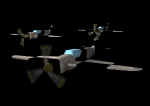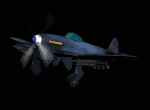Pursuit Group Officer Training Program | home
Rules and Regulations


I. Establishment and Operative Goals
I. The Pursuit Group Officer Commander Training Wing exists to train any member to become a
Commander. From hence forth (22 March 2001) all position officers are required to have passed the
Training Wing. This applies for all Command Positions, from Wings, Groups, to Flights, as well as all
Adjutant positions in Wings, Groups, and Flights.
II. In command of the Pursuit Group Officer Commander Training Wing shall be an officer of rank of
Major or higher and this officer should be in the knowledge that he is in charge of producing trained officers
fit for leading. An Adjutant should be on hand for assistance.
II. Application Procedures
I. The Pursuit Group Officer Commander Training Wing Commander and Adjutant are to select a
member whom they feel is officer materiel and they are to inform the PGHQ Commandant of their choice. If
the Commandant agrees the chosen member will be sent an invitation to the Pursuit Group Officer
Commander Training Wing. Also members of the PGHQ Squadron may apply to the Pursuit Group Officer
Commander Training Wing but they should be told that most members who apply will not be accepted and
that only 4 to 6 officers can be trained at the same time.
II. To be invited or successfully apply to the Pursuit Group Officer Commander Training Wing , a member
must have the following experience and meet the following guidelines: the member must be of decent
character and resolve fitting to the PGHQ Squadron and fitting of command. The member must be at or
above the rank of Second Lieutenant. The member must have reasonable knowledge of the PGHQ Code of
Conduct. The member ought to be available on the Zone at least once a week.
III. All successfully applied or successfully invited members to the Pursuit Group Officer Commander
Training Wing must be reported at soonest possible convinence to the Cheif PGHQ Roster Officer for
proper record keeping. Once the Roster Officer acknowledges the new Pursuit Group Officer Commander
Training Wing members, the training is free to begin.
III. Beginning Training Procedures
I. The first idea of the Pursuit Group Officer Commander Training Wing is to cement for PGHQ good,
decent members for leading our wing, groups, and flights. For the member of the PG OCT Wing is to read
again the PG Code of Conduct, especially the "Uphold Fair Play" parts.
II. Second, the members should be briefly reminded of our wars and other nasty things that came about
mostly because of poor leadership on a squadron level. Members of the PG OCT Wing should be shown
the lessons we have learned from the wars and why we remember these lessons.
III. All PG OCT Wing should then be told the optimum methods of leading wings, groups, and flights. Tell
all members that the leader should expect no more from his pilots as his pilots would expect from him. It
should be stressed that the leaders ought to be liked and appreciated by their pilots, and from this the
leader will gain workable respect. Inform the members that respect gained by instilling fear into their pilots
is not true respect; it is rather a do-or-regret-it situation. Pilots subjected to such experiences will not last
long in PGHQ.
IV. Teach in volume foreign squadron relations and let all members of the PG OCT Wing be known to
salute all foregin squadron members that they come in contact to which outrank them, or if the squadron
does not use ranks, salute the foreign squadron member as if he was of higher rank. Utmost respect
should be used at all times unless the PGHQ Central Command says it is not necessary, including
squadrons which we are not on good terms with. Under no circumstances will the use of foul language of
any sort to a foreign squadron member be tolerated, including circumstances of war, etc.
V. Inform the PG OCT Wing member that if ever a problem occurs in relation to a foregin squadron which
is unable to be solved at his lever he should consult the next available member of the Chain of Command. If
this next member cannot solve the problem he will also go up the chain of command, thus the first person
should merely tell the next up in the chain of the incident and then forget it unless later called upon.
IV. Advanced Training Procedures
I. Each PG OCT Wing member should be then told what to do about spies or irritating foreign groups. In
the case of a suspected spy or a foregin squadron causing trouble, skipping sections of the Chain of
Command is permitted. In such situations the Chain of Command is merely a waste of time because the
PGHQ Central Command is bound to become involved anyways, and such matters are usually requiring of
haste.
II. In the case of a spy, the matter should be sent directly up to the PGHQ Central Command and until
then no-one should "blow" the spy's cover. Lower officers are not to meddle in serious inter-squadron
matters.
III. Inform the PG OCT Wing members that if any squadron wants to declare war on us, etc, the matter
should be reported immediately to PGHQ Central Command and their pilots ordered to put on Ignore the
entire squadron that is bothering us. When Central Command gives the all clear they may be taken off of
Ignore. All PG OCT Wing members must be fully knowledgeable in the fact that under no circumstances
are they or their pilots allowed to have an unfriendly encounter, whether by airplanes or by word, with an
"enemy" squadron.
V. End of Training Procedures
I. Each PG OCT Wing should then be given a Review Test containing the basics of the week's
instruction. Upon taking this test the PG OCT Wing member should be reported to the PGHQ Cheif Roster
Officer that this member has completed the course, for proper record keeping.
II. The PG OCT Wing members, after graduation, are to be placed in the "available" list, with an
indication by their names meaning they have been trained for Command.
III. At this time the officers are free to be put into any Group, Wing, or Flight and may act as normal
pilots in which they are regular Flight members. This is assuming that they are not immediately placed in a
command position


